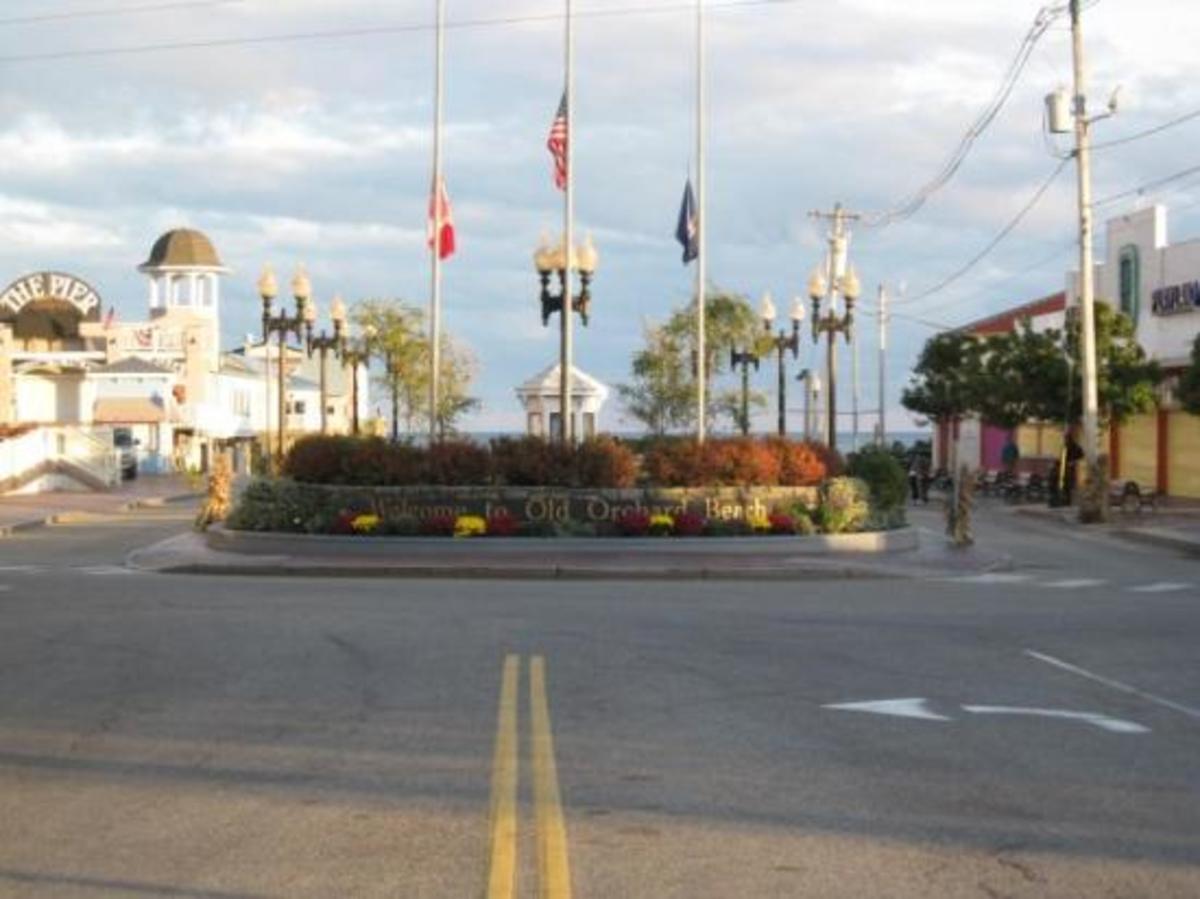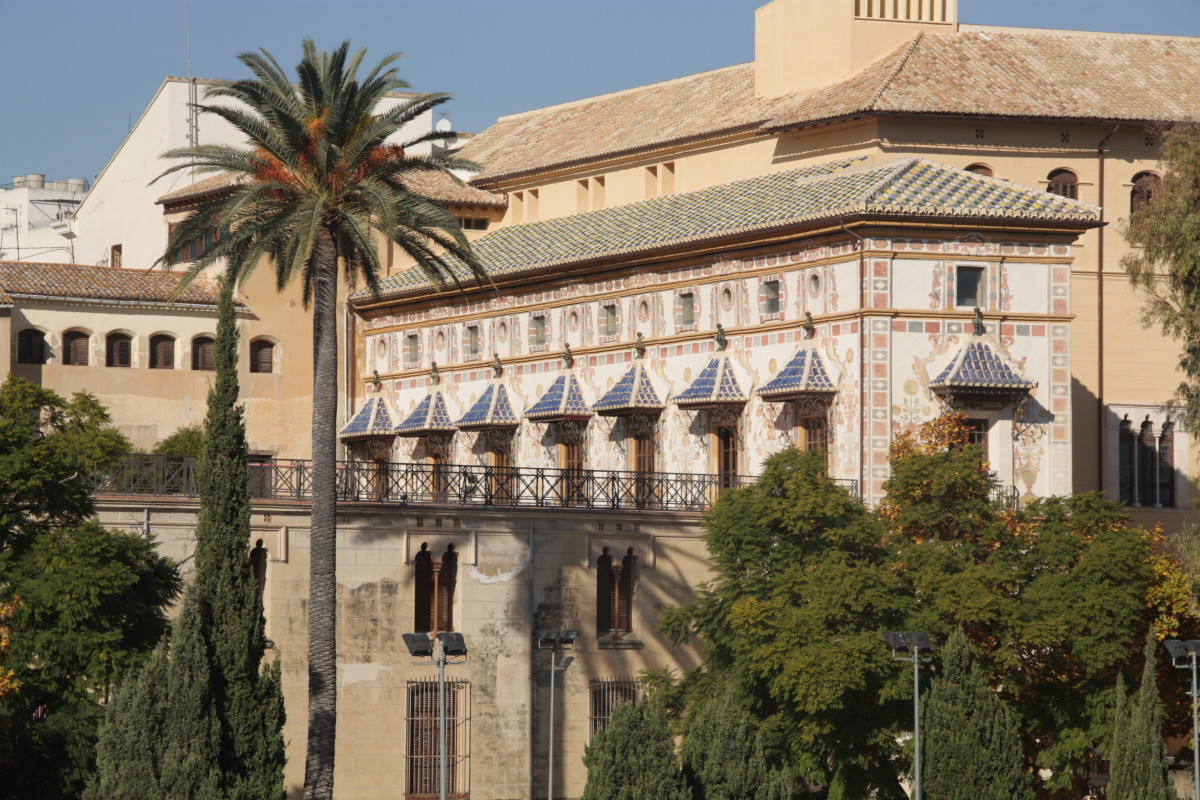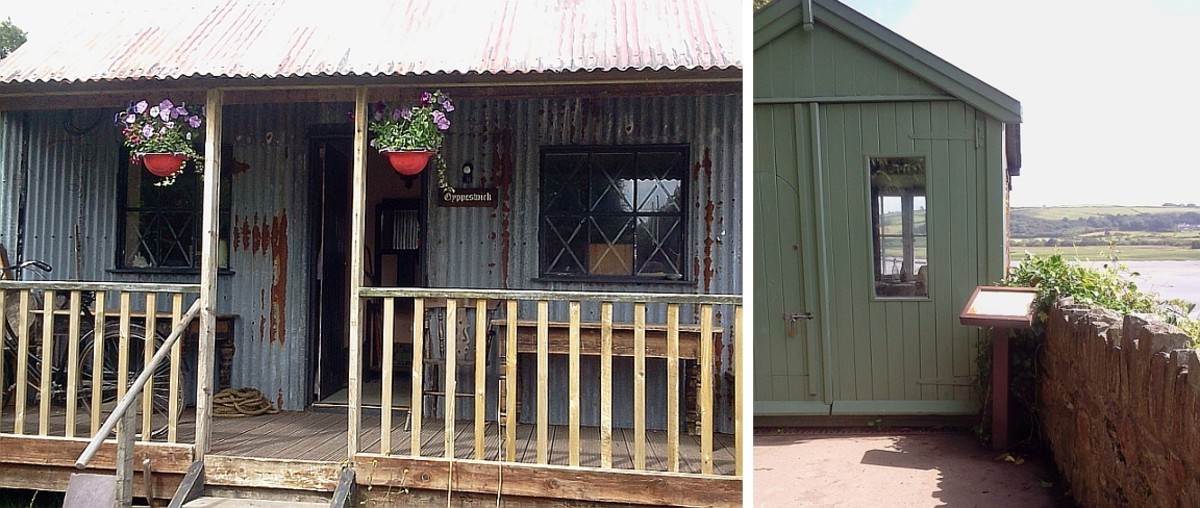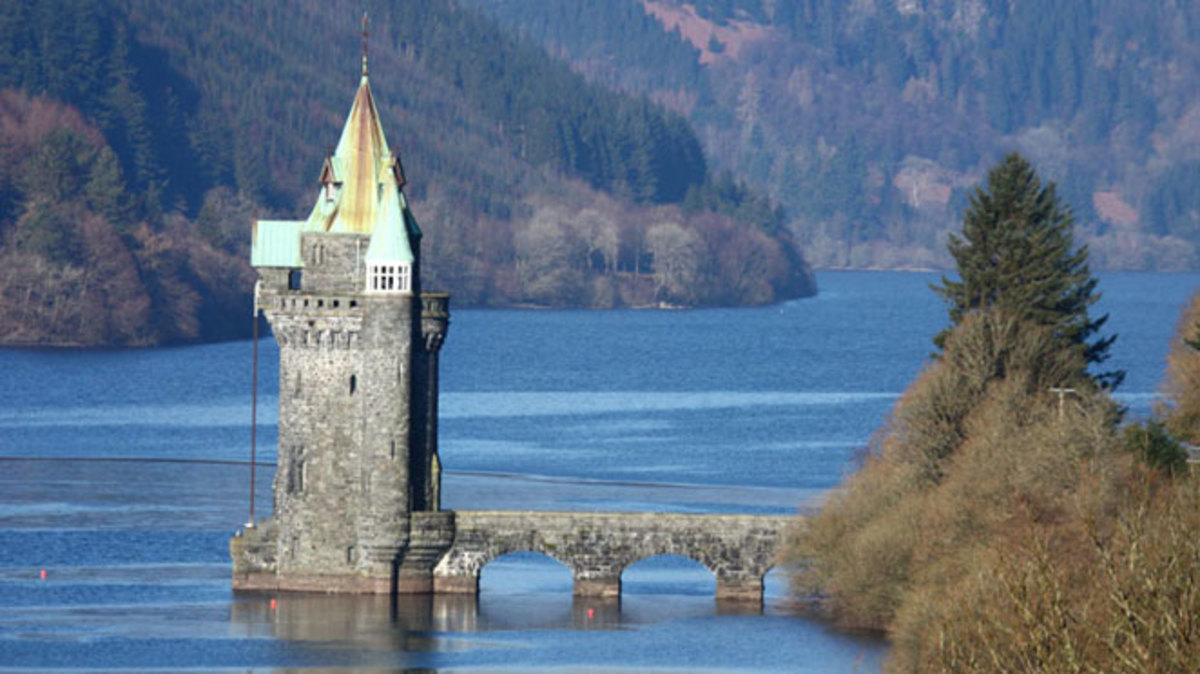- HubPages»
- Travel and Places»
- Visiting Europe»
- United Kingdom
Destination: Llandudno
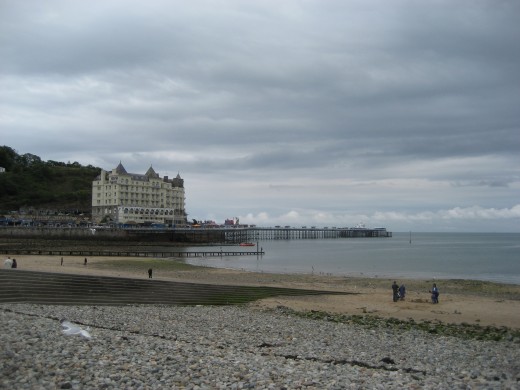
Snowdonia and North Wales
North Wales is at some levels a tourist trap - but it's a popular destination for a reason. It is a location with something for literally everyone. Families with children will enjoy the castles, trains, and beaches. Couples can find plenty of places for a romantic walk or take excursions that have not changed since the nineteenth century. For the active traveler, everything from challenging hiking to horseback riding to white water tubing can be found.
All of it is within a relatively small geographic area, although be warned that some of the roads are, shall we say, "fun." By certain definitions of fun - and yes, on unfenced roads the sheep really do have right of way. And the sheep know it.
One challenge of visiting this area is finding an accessible, convenient, and pleasant base of operations. Llandudno is one popular option - and like the area, it's popular for a reason.
Location
Llandudno is located on the north coast of Wales tucked into a sheltered area behind the Great Orme. The Orme used to be an island, but is now connected to the mainland by a permanent sand bar, on which most of the town is built.
This means Llandudno is built on flat ground along a broad promenade and wide beach. It is close to the Medieval town of Conwy (in fact, the fit and healthy can fairly easily walk between the two towns - a good idea if you are fit and healthy as there's really nowhere to park in Conwy).
It is only five minutes from the main east-west highway that runs along the North Wales coast, allowing easy access to the rest of the coastal towns or up into the interior. Although Llandudno itself is not on the main east-west rail line, it does have a rail station (change at Llandudno Junction or rent a car close to that station and drive the short distance into town).
History
The Orme used to be an island. At one point there were several villages on the Orme itself - and Llandudno, tucked under its south eastern edge. A small village of less than 1,000 people, it existed to farm the Orme (mostly sheep) and provide workers for the copper mine under the headland. The copper mine was exhausted in 1850.
That year was when Llandudno changed forever, and it all came down to the Mostyn family. The family purchased a segment of the broad sandbar connecting the Orme to the mainland. This was cheap land, unsuitable for farming and known to be prone to salt flooding, so the family was able to acquire a significant area.
The Mostyns knew, though, that they could make a lot of money from this "cheap" land. They built up the edges to prevent flooding and then laid out and platted a planned town. This new Llandudno was, from the start, built for one purpose: Tourism.
It was built to fulfill the growing demand for "taking the waters" - in the nineteenth century people believed traveling to the seaside would fix what ailed you. By 1858 the town was thriving, accepting tourists from Ireland and England to stay in guest houses along the waters and stroll along its promenade and pier.
A huge storm put a dent in the town's fortunes and destroyed the pier (which was rebuilt in 1878). By the turn of the century, though, Llandudno was one of the most popular resorts, with a street funicular tramway up the Orme and a huge seafront hotel.
Almost everything that was there then is there today.
Accommodations
Llandudno has plenty of places to stay. If you are on a budget, look for housing off the waterfront, which is generally a lot cheaper. The promenade is lined with small hotels and the Grand Hotel, built in 1903 next to the pier, still takes guests - a pricy but classic option.
Travelers should be warned that most of the guest houses that are set back from the water in the town proper do not offer accessible options - disabled travelers should talk to the hotelier before booking and make sure their precise needs can be met. Guest houses generally offer full British style breakfast - hotels may or may not provide this perk.
Llandudno is a very walkable town and being a few blocks from the beach is not a hardship.
Food
British food is bad, right?
Don't tell that to the people of Llandudno. You can get everything here from decent (not quite London quality but pretty good) Indian to traditional pub grub. The Kings Head pub in old Llandudno (the original pub of the original village) sells pies to die for.
In addition to the Kings Head, I recommend the Albert (traditional British), Jaya (good Indian) and Casanova (traditional, old-style Italian), but it's harder to find a bad restaurant in Llandudno than a good one. The town has become a center of Welsh gourmet cooking. And yes, you can also find a decent serving of fish and chips.
The Promenade and Pier
Llandudno's promenade is a wide, paved, pedestrian-only area between the hotels and the beach (serving much the same purpose as the American boardwalk, except it won't collapse in the next storm).
It forms a gentle curve through the bay. In tourist season, which runs roughly from May until September, with the peak being August (when British children enjoy summer break) the Promenade often has temporary attractions on it such as traditional Punch and Judy puppet theater. A road train runs between the south promenade and the much quieter north promenade, but many tourists never find their way to the north promenade, which is often full of locals walking their dogs.
The beach is naturally a pebble beach, but part of it has been artificially converted to sand. This section is closest to the pier. At the far end of the beach is a beach cafe.
Llandudno's pier is one of the best reasons to go there. Very few nineteenth century piers remain in their original condition and standing their original length and Llandudno's is one of the best surviving examples. Access to the pier is free, but does require running a gauntlet of tacky souvenir stands and snack bars. (You should, of course buy the traditional British seaside resort rock candy while you are there). There are penny arcades at both ends of the pier and also a cafe and bar on the sea end.
Americans will be shocked to discover that the arcades are partially open to all-ages - it is legal in Britain for children to gamble for prizes up to a certain amount, although both have adult-only areas for higher stakes. These arcades also contain video games.
There is a small, child-oriented pleasure beach/amusement park at the base of the pier.
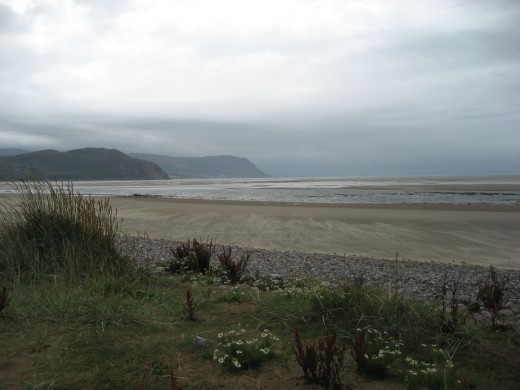
The Great Orme
The second of Llandudno's major attractions is the Great Orme itself. There are three ways of reaching the summit.
First, you can walk from the park next to the pier (known as Happy Valley) or from behind the village. If going through Happy Valley make note of the small stone circle. This dates from 1963, when the National Eisteddfod (a cultural festival) was held in Llandudno and was built to be used as a bardic and storytelling circle.
Second, a funicular tramway runs from next to the Kings Head pub to the summit. The tramway stops at the old copper mine (open to the public for a price) on its way to the top.
The third method is a cable car that starts in Happy Valley. This route offers the best views, but may be halted in high winds. It is possible to buy a round trip ticket that combines the cable car and the tram. (The Orme does have road access, but why?)
On the village side of the Orme is the Llandudno Ski Center, which offers the longest artificial ski slope in Britain. (Those from countries with real ski resorts may start laughing now - it's 300 meters). It also has a 700 meter dry toboggan run. It's good for the novice skier (classes are offered), but probably not challenging enough for those who know what they are doing.
There is also a road that runs around the Orme. This road can be walked or driven for a toll. It is a one way road - you can only drive it anti-clockwise. For a price you can also take a tour bus around the Orme. Your toll also gives you access to the summit and free parking.
The Orme is quite large and is still farmed. A church and yard stand to the northeast of the summit, although the village it once served is now gone.
The building on the summit used to be The Summit Hotel and is now called The Summit Complex, as it no longer offers accommodations. (It was at one point the nineteenth hole for a now-gone golf course). A modern visitor center is built just under the complex. The summit offers a cafe and restaurant, a play area, a garden of local plants with labels, and a tourist information center. It can be fairly cold and windy up there - a jacket is recommended even in summer.
Conwy
As mentioned, the North Wales region has something for everything, and Llandudno is within striking distance of all of it.
A few minutes drive...or a pleasant walk along a coast path...will lead you first to the former fishing village of Deganwy and then to the lovely town of Conwy, dominated by its castle. Get a local to tell you how to find the trail up through Deganwy to the first castle on the hill above the town. King Edward took one look at the site and decided to build an entirely new castle in the town! (On windy days, you can't blame him, but the real reason was that he could not trust the hinterlands and needed reliable water access for resupply). Conwy's walls are intact and almost the entire circuit can be walked.
Admission is charged for the castle, which is part of the World Heritage Site known as the Ring of Iron - the site includes Conwy, Caernarvon, Beaumaris and Harlech castles. Each of the four castles showcases aspects of the highest art of the castle builder - they were constructed not long before the invention of cannons rendered castles obsolete and have been restored and kept in excellent condition.
Conwy itself is a cute Medieval town. Watch out for the jackdaws - they're shameless beggars. A person born within the walls of Conwy is also known as a "Jackdaw."
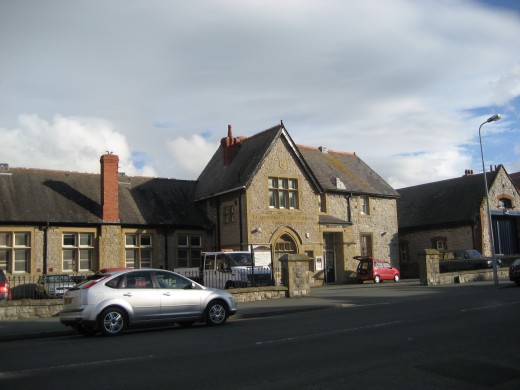
Safety and Travel Tips
Tip one: Do not feed the herring gulls.
Tip two: DO NOT FEED THE HERRING GULLS.
Herring Gulls are three times the size gulls are supposed to be and while most gulls are flying rats? Herring gulls are flying raccoons. Except worse. They think they can take you - and sometimes can. Yes, people have been hurt by these birds. Even more people have lost their lunch. They'll take the sandwich right out of your hands and fly off cackling. While it is not technically illegal to feed them, it is very much frowned upon. Nobody wants to encourage the bandits in their depredations.
More tips:
ATM machines are easy to find and usually located in convenience stores. HBSC ATMs, however, will not take American cards. I have found that most convenience store ATMs will. Do not use your credit card to withdraw cash - debit cards have lower foreign transaction rates.
The climate in North Wales is...interesting. If you don't like the weather wait five minutes or walk a mile. Don't leave your hotel without a rain jacket. I've even regretted leaving my hotel there without rain pants. The rain here can get very hard, even in the middle of summer. Temperatures tend to hover around the high sixties to the low seventies. On a sunny day it can even get to the high seventies, but don't count on it. Weather tends to change with the tide, so checking a tide calendar can be helpful. If you plan on hiking at all, take a good set of boots.
Do not swim off of any UK beach that has ripples in it that run at an angle to the water - that can be indicative of a dangerous rip current.
Off of the main highway, roads are narrow and farm animals often wander into them. The speed limit on these roads is 60 mph. The real speed limit is "Use your common sense." Some roads are so narrow you have to use a formal passing place, or a handy gateway, to get past a vehicle coming in the other direction. Most are so narrow they might scare American drivers used to wider travel lanes and shoulders. (Shoulder? What's that?) And the locals, of course, know every twist and turn and drive accordingly. Plus, people also ride horses in the road. Routinely. In other words, the real speed limit is probably about 25mph - and drive very carefully.


